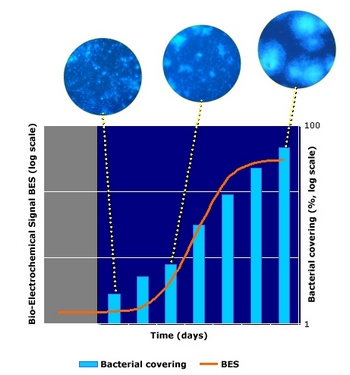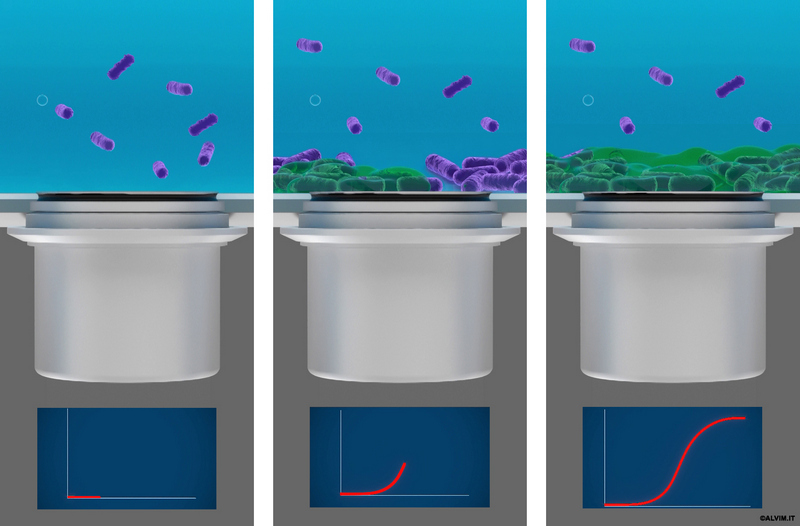
ALVIM Biofilm Sensor gives a signal related to increasing bacterial covering. In this way it is possible to choose the right time for cleaning treatments, verifying, at the same time, their effectiveness.
With time biofilm becomes more and more resistant to cleaning treatments, due to EPS production, and thus becomes more and more difficult to be removed, requiring, e.g., higher chemical concentrations, therefore entailing increased costs. If even a small part of the biofilm survives to the cleaning treatment (and this often happens if the treatment is not applied during biofilm initial development), it will grow again very quickly. Moreover, some biofilm related problems start as soon as biofilm appears on a surface: MIC (Microbiologically Influenced Corrosion, i.e. a rapid increase of metal corrosion in presence of biofilm), for example, begins with biofilm first development on a surface.
ALVIM Biofilm Sensor detects microbiological growth since the very first colonization phase, even before the surface is completely covered by bacteria. This allows for a prompt cleaning treatment, before the biofilm is "strongly sheltered", making possible to achieve the best results in terms of biofilm removal and cost efficiency. This is not possible with other probes, because they detect biofilm when it is too late. Moreover, most of them are not based on the detection of biological activity and, therefore, they cannot discriminate between biological fouling and other kinds of fouling (inorganic deposit, scaling, etc). Such sensors are usually classified as fouling sensors.






